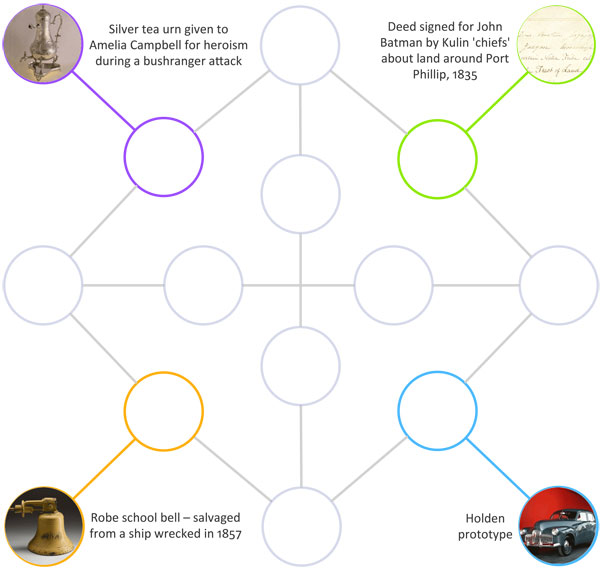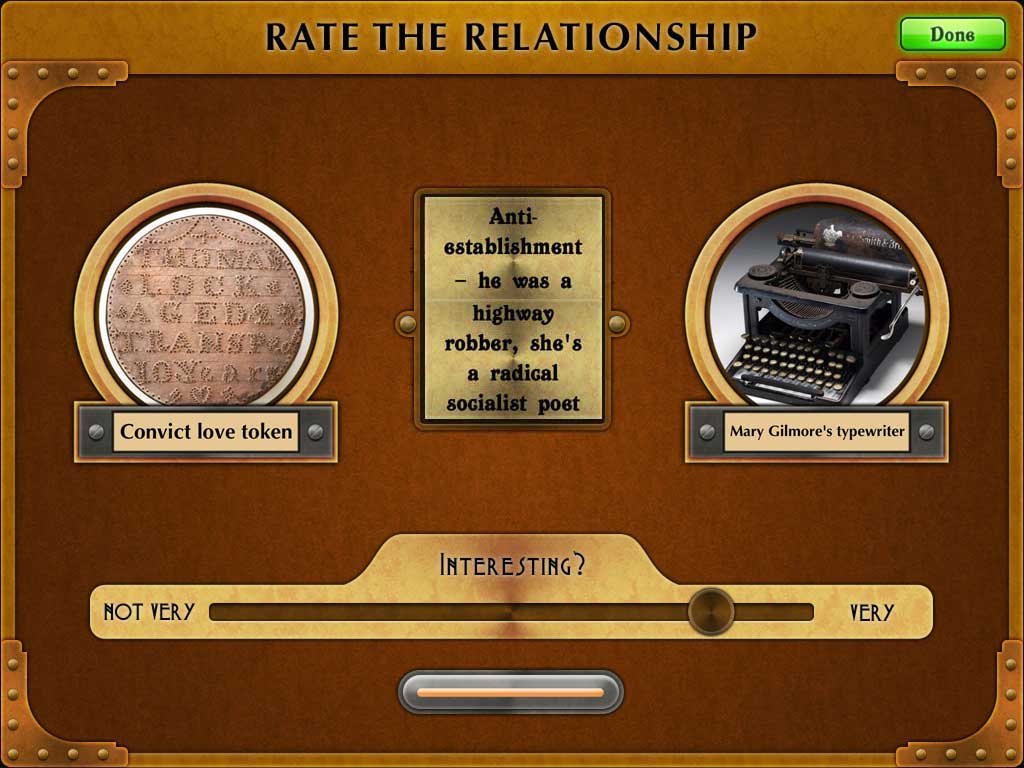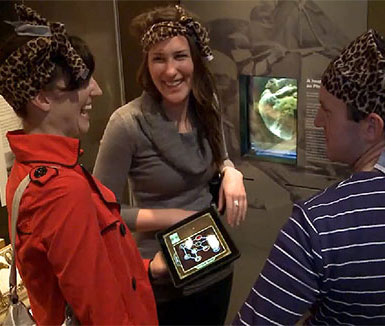Sembl: conception
Dream announcement: the Museum is developing a prototype of an iPad game for teams of students visiting the physical space of the Museum. It’s called Sembl and I’m just a bit excited about it.
The game
Sembl is a game of relatedness. The challenge is to think about an object’s attributes – composition, shape, colour, use, provenance, whatever! – in order to find a way in which it relates to another object.
The aim is to occupy nodes on the gameboard, by making meaningful – and appealing – connections. In each round, players must identify an object and describe how it relates to existing objects on the board. Each round is time-limited, but teams need to take care to create connections that are interesting or delightful in some way – whoever proposes the best object and relationship wins the place on the gameboard.

Board design
We’ll provide a few different boards, to suit different player numbers and levels – we want kids as young as 10 to enjoy the game. Above is a sample board for four teams, which might work well for older children and adults. Seed content can be anything on display at the Museum but in this case all the objects are on display in our Landmarks gallery.
Origins
Sembl is based on a conceptual game that Charles Cameron aka @hipbonegamer has used for decades now – hipbone games – which take many forms and work for many purposes, from pure amusement through to thinking deeply about the connections between apparently disparate opposites. Charles’ games are in turn inspired by the glass bead game in the Herman Hesse novel of the same name.




Hi Cath:
I very much like what you’re doing here, and there’s a Parchesi-like quality to your board as I see it (http://www.ludoteka.com/parcheesi.html, eg). My question would be how you handle the competitive aspect of play between your four teams, especially as with 16 positions on the board there are four moves for each team. Is the contest for “most fascinating link” or for something more easily quantifiable (“and the winner is…”)?
Congratulations, in any case!
Charles, hey! Good to see you here. I can see the resemblance :) with the Parcheesi board – both the cross shape and the home quarters.
Re how the competition works… yes, you have hit on an aspect of the game we are currently grappling with. Sembl games are divided into rounds; in each round particular nodes become available. The first round will always (or usually) be non-competitive, so players can get a feel for the concept of relatedness and ease into the game. In later rounds, each team proposes one or more nodes and relationships, and then there’s a resolution phase, where everyone gets to vote on or otherwise evaluate all the proposed connections to decide which one/s to place on the board. The pace and the feel of the game therefore shifts back and forth between the frantic creative phases and the calmer resolutionary phases.
It’s obviously critical that the game inspires a will to compete *and* elicits joy regardless of the outcome.
Very cool. This is how I make connections among people to get something new to happen. I could see Sembl teaching people how to randomly combine concepts to spark innovation, the way Frans Johansson describes in The Medici Effect.
Ooo, interesting. Added to my reading list – thank you!
Charles, thank you for pointing me here. Cath, I love what you are doing. This is very exciting to me.
Hi Leah, good to have you here!